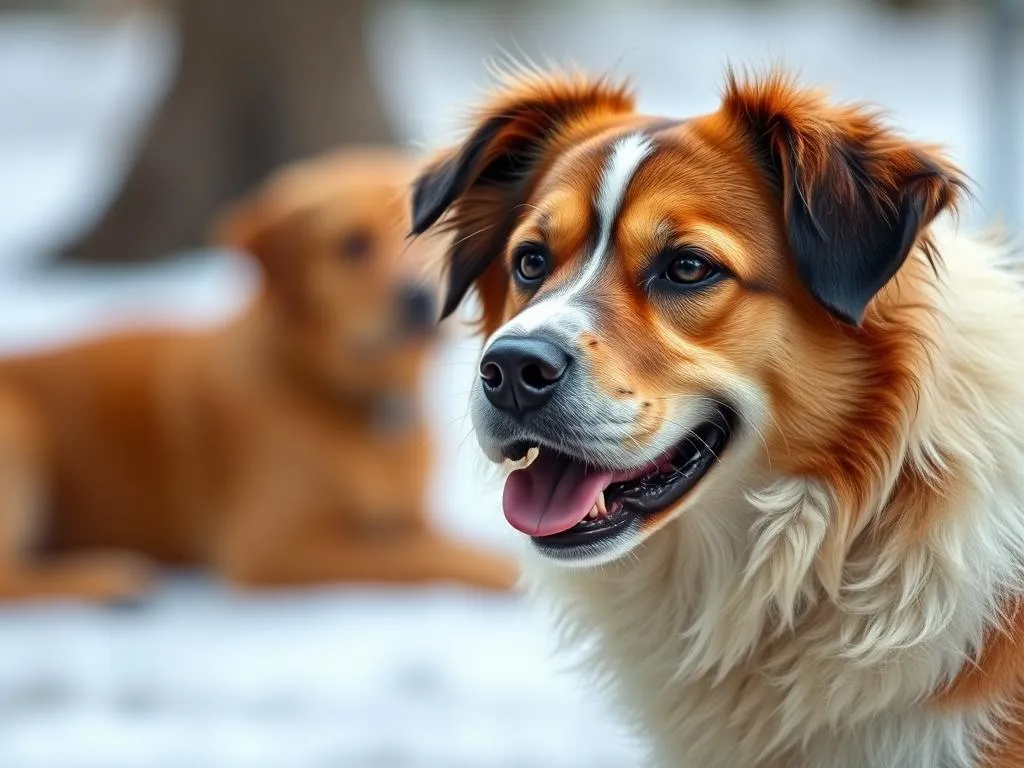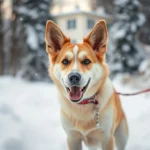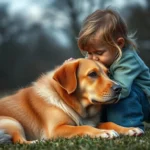
Introduction
There’s a profound emotional connection between humans and dogs that transcends words. These loyal companions have been by our side for thousands of years, providing comfort, joy, and unwavering support. One way to capture the essence of this bond is through poetry, specifically haiku about dogs.
Haiku is a traditional Japanese poetic form characterized by its 5-7-5 syllable structure. It’s a brief yet powerful way to express deep feelings and observations about life, nature, and even our furry friends. In this article, we will delve into the significance of dogs in our lives, explore the beauty of haiku, and inspire you to create your own haiku about dogs.
This article will unfold in several sections: we’ll examine the bond between humans and dogs, understand the haiku form, explore its expressive potential, provide examples, and offer tips for writing your own haikus. Let’s embark on this poetic journey together!
The Bond Between Humans and Dogs
Historical Context
Dogs have accompanied humans for millennia, evolving from wild wolves to our beloved pets. The domestication process began approximately 15,000 years ago, leading to a variety of breeds tailored for specific tasks such as herding, hunting, and companionship. Over time, dogs have transitioned from mere workers to cherished family members, playing vital roles in our lives.
Emotional Connection
The emotional bond between humans and dogs is incredibly strong. Studies have shown that having a dog can significantly reduce stress and increase feelings of happiness and companionship. Dogs are often referred to as “man’s best friend” for good reason—they offer unconditional love and support, making them invaluable companions in our daily lives. Anecdotally, many dog owners can share stories of how their furry friends have lifted their spirits during tough times.
Cultural Significance
The presence of dogs in art, literature, and popular culture showcases their significance in human society. From classic literature featuring loyal hounds to modern films that celebrate canine heroes, dogs symbolize loyalty, friendship, and love. Their representation in various forms of media reflects the deep-rooted connection we share with these animals, inspiring countless pieces of art and poetry.
Understanding Haiku
Origin of Haiku
Haiku originated in Japan during the 17th century as a form of collaborative linked-verse poetry called “renga.” The initial stanza of a renga, known as “hokku,” eventually evolved into the standalone form we recognize today as haiku. Haiku gained international popularity in the 20th century, inspiring poets around the world to embrace its simplicity and beauty.
Structure and Rules
The defining feature of haiku is its structure: three lines with a syllable count of 5-7-5. This concise format encourages poets to distill their thoughts and emotions into a few carefully chosen words. Traditionally, haiku also incorporates seasonal words (kigo) and cutting words (kireji) to create a sense of depth and contrast.
Themes in Haiku
Haiku often explores themes related to nature, the changing seasons, and human emotions. The beauty of haiku lies in its ability to convey complex feelings in a simple format. Dogs, with their playful, loving nature, fit seamlessly into these themes, inspiring poets to capture moments of joy, companionship, and adventure.
Haiku as a Form of Expression
Creative Writing Benefits
Writing haikus can enhance creativity and sharpen observational skills. The challenge of fitting thoughts into a 5-7-5 structure encourages poets to think critically about their word choices and the images they wish to convey. By focusing on the present moment, writers can cultivate mindfulness and appreciation for the beauty surrounding them.
Haiku and Emotional Expression
Haikus serve as a powerful medium for emotional expression. The succinct nature of the form allows writers to convey feelings and experiences with dogs in a way that resonates with readers. Whether it’s the joy of a wagging tail or the quiet companionship of a dog resting at your feet, haikus can capture the essence of these moments beautifully.
Examples of Haikus About Dogs
Classic Haikus
While traditional haikus may not often focus on dogs, many poets have embraced the theme through their work. Here’s an example of a classic haiku that resonates with dog lovers:
Over the green hill,
A barking dog runs freely,
Joy in every leap.
Original Haikus
To celebrate our canine companions, here are a few original haikus inspired by the love we share with dogs:
Morning sunlight streams,
A wagging tail greets the day,
Friendship in each bark.Paws on the soft grass,
Chasing shadows in the park,
Laughter fills the air.Under the night sky,
A gentle snore by my side,
Dreams of chasing stars.
Each of these haikus captures a unique aspect of life with dogs, from the simple joy of a morning greeting to the peaceful companionship of shared moments.
User-Generated Content
We encourage you to share your own haikus about dogs! Your unique experiences and observations can contribute to a growing collection of canine poetry. Consider submitting your haikus, and we may feature some of the best ones in future articles.
Writing Your Own Haiku About Dogs
Tips for Beginners
If you’re eager to write your own haiku about dogs, here’s a simple step-by-step guide:
- Choose a moment: Reflect on a specific memory or feeling related to your dog.
- Observe your surroundings: Pay attention to the details in the moment—sights, sounds, and emotions.
- Draft your haiku: Begin framing your thoughts within the 5-7-5 structure, focusing on imagery and emotion.
- Edit and refine: Review your haiku, ensuring every word serves a purpose and conveys the intended feeling.
Prompts for Inspiration
Here are some prompts to help spark your creativity:
- Recall a favorite memory with your dog.
- Describe a typical day in your dog’s life.
- Reflect on your dog’s quirks or habits.
- Write about a moment of connection or understanding between you and your dog.
Common Mistakes
When writing haikus, beginners often struggle with sticking to the syllable count or incorporating seasonal elements. Here are some tips to avoid common pitfalls:
- Syllable Count: Read your haiku aloud to check the rhythm. Counting on your fingers can help you keep track.
- Imagery: Focus on vivid imagery rather than abstract concepts. Haiku thrives on concrete details.
- Edit Ruthlessly: Be willing to cut unnecessary words. Every word in a haiku should carry weight.
The Role of Dogs in Our Lifestyle
Dogs as Family Members
For many people, dogs are not just pets; they are integral members of the family. They enrich our lives with companionship, loyalty, and unconditional love. As family members, dogs participate in daily activities, from morning walks to family gatherings, creating lasting memories.
Health Benefits
Having a dog can significantly enhance physical and mental health. Regular walks and playtime encourage physical activity, while the presence of a dog can alleviate feelings of loneliness and anxiety. Research has shown that interactions with dogs can lower blood pressure, reduce stress, and elevate mood.
Community and Social Interaction
Dogs foster connections between people, whether at dog parks, community events, or through social media. They serve as conversation starters, helping strangers bond over shared experiences. The rise of dog-focused events and social media groups has created vibrant communities where dog lovers can share stories, tips, and companionship.
Conclusion
In summary, the bond between humans and dogs is a beautiful testament to loyalty, love, and companionship. Haiku about dogs serves as an artistic expression of these feelings, allowing us to capture moments that reflect our deep connection with our furry friends.
As we appreciate the role dogs play in our lives, let’s also celebrate the simplicity of expressing our love through haiku. We encourage you to pick up a pen and write your own haiku about the remarkable bond you share with your dog. Your words may inspire others to reflect on their own experiences and connections with these incredible companions.









